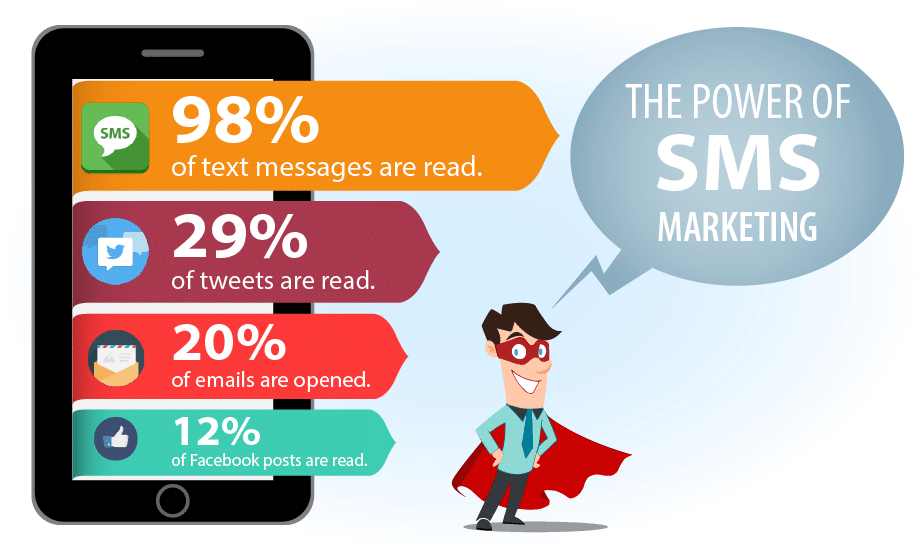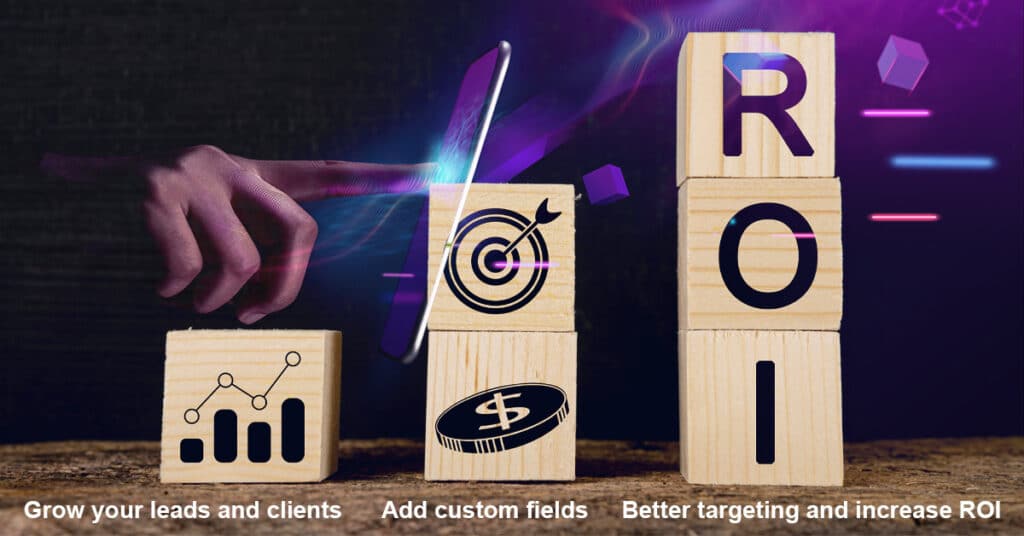📑 Table of Contents
- Understanding Text Message Marketing
- Key Components of a Successful SMS Marketing Campaign
- Crafting the Perfect Message
- Engaging Your Audience
- Measuring Success
- Building a Community through Text Message Marketing
- Advanced Strategies for Text Message Marketing
- Ensuring Text Message Marketing Accessibility
- Segmentation and Targeting
- Creative Use of Multimedia Messaging Service (MMS)
- Leveraging Integrations and Automation
- Optimizing for Mobile
- Testing and Optimization
- Building a Strong CTA
- Maximizing ROI with Text Message Marketing
- Utilizing Text Message Marketing for Event Promotion
- Leveraging Text Message Marketing for E-commerce
In this digital world, businesses always look for new ways to connect with their audiences and drive engagement. Text message marketing, also known as SMS marketing, has emerged as a powerful tool, allowing companies to reach customers directly on their mobile devices.
This blog post delves into the various facets of text message marketing, providing insights, best practices, and real-world examples to help you leverage this effective communication channel. So, without any further ado, let’s start right on.
Understanding Text Message Marketing
Text message marketing involves sending promotional or transactional messages via SMS (Short Message Service) to a list of subscribers who have opted in to receive these communications. With open rates as high as 98%, SMS marketing offers unparalleled potential.
Key Components of a Successful SMS Marketing Campaign
- Opt-In Process: Ensure that your subscribers have willingly opted in to receive messages. This can be done through sign-up forms on your website, in-store promotions, or other channels.
- Message Content: Craft concise, clear, and compelling messages that resonate with your audience. Include a clear call-to-action (CTA) to guide subscribers on the next steps.
- Timing and Frequency: Send messages at optimal times and maintain a balanced frequency to avoid overwhelming your subscribers.
- Personalization: Use customer data to personalize messages, making them more relevant and engaging.
- Monitoring and Analytics: Track the performance of your SMS campaigns and use the insights to optimize future communications.
Crafting the Perfect Message
The effectiveness of your text message marketing campaign hinges significantly on the content of your messages. Crafting the perfect message requires a blend of brevity, clarity, and engagement. Here are some key points to consider:
- Keep Your Message Short: SMS messages are capped at 160 characters, so it’s important to get straight to the point. Ensure your message is concise and easy to understand, while still conveying all necessary information.
- Use a Clear CTA: Your message should have a clear and compelling CTA that tells the recipient exactly what you want them to do next. Whether it’s to “Buy Now”, “Sign Up”, or “Learn More”, make sure it’s straightforward and easy to act upon.
- Personalize Your Messages: Whenever possible, personalize the messages to make them more relevant and engaging to the recipient. Use the recipient’s name, reference past purchases, or tailor the content based on their preferences or behavior.
- Make It Feel Like Urgent: If appropriate, create a sense of urgency in your messages to encourage quick action. Phrases like “Limited Time Offer” or “While Supplies Last” can be effective in driving immediate engagement.
- Ensure Message Clarity: Ensure that your message is clear and free of any ambiguity. Avoid jargon or slang that might be misunderstood, and ensure that any abbreviations are commonly recognized.

Engaging Your Audience
Engagement is the ultimate goal of any SMS marketing campaign. Here are some strategies to boost engagement with your SMS campaigns: Read more in-depth analysis of SMS campaign insights and educate yourself.
- Run Contests and Giveaways: People love the chance to win something. Running contests or giveaways via SMS is a great way to engage your audience and encourage participation.
- Offer Exclusive Deals: Use text messages to offer exclusive deals or discounts to your subscribers. This adds value to your messages and gives recipients a reason to stay subscribed.
- Ask for Feedback: Use SMS as a channel to gather customer feedback. Send a message asking for their opinion on a recent purchase or their experience with your brand. Not only does this provide valuable insights, but it also shows your customers that you value their opinions.
- Provide Value-Added Content: Beyond promotional content, consider how you can provide additional value through your SMS messages. This could be in the form of tips, advice, or exclusive content related to your product or service.
Measuring Success
Like any marketing channel, it’s important to measure the success of your text message marketing campaigns to understand what’s working and what can be improved. Here are some key metrics to track:
- Delivery Rate: The percentage of messages that were successfully delivered to the recipient’s device. A low delivery rate could indicate issues with your contact list or delivery system.
- Open Rate: While tracking open rates for SMS is more challenging than email, you can infer engagement through click-through rates or responses.
- Click-Through Rate: If your SMS includes a link, the click-through rate can be a strong indicator of engagement. Track how many recipients clicked the link in your message.
- Conversion Rate: Ultimately, the goal of your campaign is to drive a specific action. Whether it’s making a purchase, signing up for an event, or downloading a resource, track how many recipients completed the desired action.
- Opt-Out Rate: Keep an eye on how many recipients choose to unsubscribe from your SMS communications. A high opt-out rate could indicate that your content is not relevant or that you’re sending messages too frequently.
Building a Community through Text Message Marketing
In addition to direct marketing and customer service, SMS can be used to build and nurture a community around your brand. Here’s how:
- Exclusive Content: Send subscribers exclusive content, such as behind-the-scenes looks, interviews, or early access to new products or services.
- Community Events: Use SMS to inform subscribers about events, meetups, or webinars, creating opportunities for them to connect with your brand and each other.
- Engagement Campaigns: Run campaigns that encourage interaction, such as polls, quizzes, or user-generated content contests.
- Personalization: Use subscriber data to segment your audience and send tailored messages that resonate with different groups within your community.

Advanced Strategies for Text Message Marketing
As you become more comfortable with SMS marketing, consider exploring advanced strategies to enhance your campaigns:
- Drip Campaigns: Similar to email drip campaigns, SMS drip campaigns involve a series of messages sent over time, guiding the subscriber through a journey or nurturing them towards a specific action.
- Location-Based Messaging: If you have access to location data, send targeted messages based on the subscriber’s location, such as promotions for nearby store locations or events.
- Integration with Other Channels: Integrate SMS with other marketing channels, such as email or social media, creating a cohesive and multi-channel campaign.
- A/B Testing: Continuously test different elements of your SMS campaigns, from the message content to the sending time, to optimize performance.

Ensuring Text Message Marketing Accessibility
Finally, it’s important to ensure that your text message marketing campaigns are accessible to all individuals, including those with disabilities. Here are some tips to improve accessibility:
- Use Clear and Simple Language: Avoid jargon and complex language and make sure that the message you write is easy to read and understand.
- Include Text Descriptions for Multimedia: If you’re using MMS to send images or videos, include a text description of the content for individuals who may have visual impairments.
- Provide Alternative Contact Options: Include information on how subscribers can reach you through other channels, such as email or phone if they prefer not to communicate via text.
- Test Your Campaigns: Test your SMS campaigns with a diverse group of individuals to ensure they are accessible and user-friendly for everyone.
Segmentation and Targeting
One of the key components of any successful marketing strategy is delivering the right message to the right audience at the right time. Text message marketing is no different.
Segmenting your contact list based on factors such as demographics, purchase history, and engagement levels allows you to tailor your messages to meet the specific needs and preferences of different customer groups.
This personalization leads to higher engagement, increased customer satisfaction, and ultimately, better conversion rates.
Creative Use of Multimedia Messaging Service (MMS)
While SMS is limited to text, MMS allows you to send multimedia content such as images, audio, and video. Leveraging MMS in your text message marketing campaigns can add a visual element that grabs attention, enhances the message, and improves engagement.
For example, a retail store could send an MMS with an image of a new product, while a restaurant might send a mouth-watering photo of a dish to promote a special offer.
Leveraging Integrations and Automation
Integrating your text message marketing platform with other tools and systems such as CRM, e-commerce platforms, and email marketing software can streamline processes and enhance the effectiveness of your campaigns.
Automation enables you to set up trigger-based messages, such as cart abandonment reminders or welcome messages, ensuring timely and relevant communication without the need for manual intervention.
Optimizing for Mobile
With the majority of text messages read on mobile devices, it’s crucial to make sure that any content or links included in your messages are mobile-optimized.
This includes ensuring that your website is mobile-friendly, that any landing pages are easy to navigate on a small screen, and that the overall user experience is seamless.
Testing and Optimization
Like any marketing channel, ongoing testing and optimization are essential in text message marketing. Conduct A/B testing on different elements of your messages, such as the CTA, message length, or sending time, to determine what resonates best with your audience. Use these insights to continually refine your strategy and improve performance.
Building a Strong CTA
Your call-to-action (CTA) is a critical element of your text message, guiding subscribers on what action you want them to take next. Ensure that your CTA is clear, concise, and compelling.
Whether you want them to visit your website, redeem a coupon, or take part in a survey, make the next steps straightforward and easy to follow.
Understanding SMS Keywords: SMS keywords are short, memorable words or phrases that subscribers can text to a short code to opt-in to receive messages or take specific actions. Selecting the right SMS keyword is crucial as it impacts the ease of opt-in and the overall success of your campaign.
Understand Compliance: Compliance is a critical aspect of text message marketing. Familiarize yourself with regulations such as the Telephone Consumer Protection Act (TCPA) and ensure that your SMS campaigns adhere to these guidelines to avoid legal issues and maintain customer trust.
Best Practices: Discover best practices for SMS marketing, including obtaining explicit consent, providing clear opt-out instructions, respecting customer preferences, and maintaining data security.

Maximizing ROI with Text Message Marketing
To ensure that your investment in text message marketing pays off, it’s crucial to maximize your return on investment (ROI). Here are some strategies to help you achieve that:
- Optimize Opt-In Processes: Make it easy and enticing for customers to opt-in to receive text messages. Clearly communicate the value they will receive, such as exclusive offers, updates, or content.
- Segment the Audiences: As mentioned earlier, segmentation allows you to send more targeted and relevant messages, which can significantly improve engagement and conversions.
- Monitor and Analyze Performance: Regularly track the performance of your SMS campaigns, analyzing key metrics and using the insights.
- Test and Refine Your Messages: Continuously A/B test different elements of your messages, such as the wording, CTA, or sending time, to identify what resonates best with your audience and refine your approach accordingly.
- Leverage Automation and Personalization: Use automation to send timely, trigger-based messages, and incorporate personalization to make your messages more relevant and engaging.
- Ensure Compliance: Make sure that your text message marketing practices comply with regulations to avoid potential legal issues and fines, which could negatively impact your ROI.
- Provide Clear Opt-Out Options: Always provide a clear and easy way for subscribers to opt-out of receiving messages, as this helps maintain a positive relationship and ensures that your messages are only sent to those who want to receive them.
Utilizing Text Message Marketing for Event Promotion
Text message marketing can be a highly effective channel for promoting events, driving attendance, and enhancing the attendee experience. Here’s how:
- Send Invitations and Reminders: Use SMS to send out event invitations, reminders, and last-minute updates, ensuring that your audience is informed and engaged.
- Offer Exclusive Discounts: Encourage attendance by offering exclusive discounts or special offers to those who register or purchase tickets via text message.
- Provide Event Information: Send out important event information, such as the schedule, venue details, or speaker bios, via SMS to ensure attendees have all the information they need.
- Gather RSVPs: Use text messages to gather RSVPs, making it easy for attendees to confirm their attendance.
- Enhance Networking Opportunities: Facilitate networking at your event by using SMS to connect attendees, share contact information, or organize meet-ups.
- Collect Feedback: After the event, send a text message to gather feedback from attendees, helping you understand what worked well and what could be improved for future events.
Leveraging Text Message Marketing for E-commerce
For e-commerce businesses, text message marketing offers a unique opportunity to drive sales, enhance the customer experience, and build loyalty. Here’s how:
- Send Promotional Offers: Use SMS to send out promotional offers, discounts, or flash sale notifications, driving traffic to your online store.
- Provide Order Updates: Keep customers informed about the status of their orders, from confirmation to shipping and delivery, via text messages.
- Offer Customer Support: Use SMS as a channel for customer support and let clients ask questions and share their opinions, track their orders, or resolve issues directly through text messages.
- Gather Product Reviews: After purchase, send a text message asking customers to leave a review of the product, enhancing your online reputation and providing valuable social proof.
- Build Loyalty: Use text messages to communicate with your loyalty program members, sending points updates, rewards notifications, and exclusive offers.

Conclusion
Text message marketing offers a direct way to communicate with your audience, foster engagement, and drive conversions. By understanding the key components, adhering to compliance standards, and implementing best practices, you can unlock the full potential of SMS marketing and propel your business forward.
Explore real-world examples of text message advertising, gain insights, and optimize your campaigns to achieve unparalleled success in the world of text message marketing.
By focusing on creating valuable content, optimizing for ROI, and engaging with your audience through text message marketing, you can enhance your digital marketing strategy and drive meaningful results for your business.
